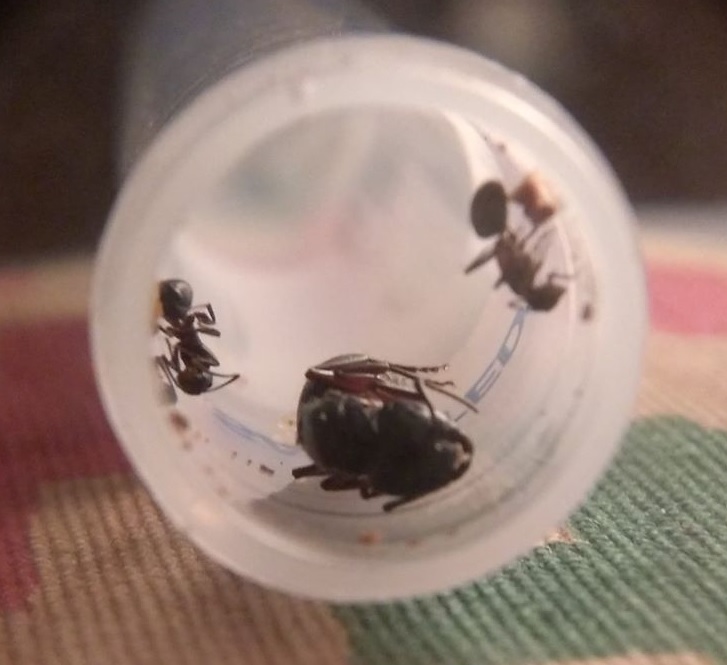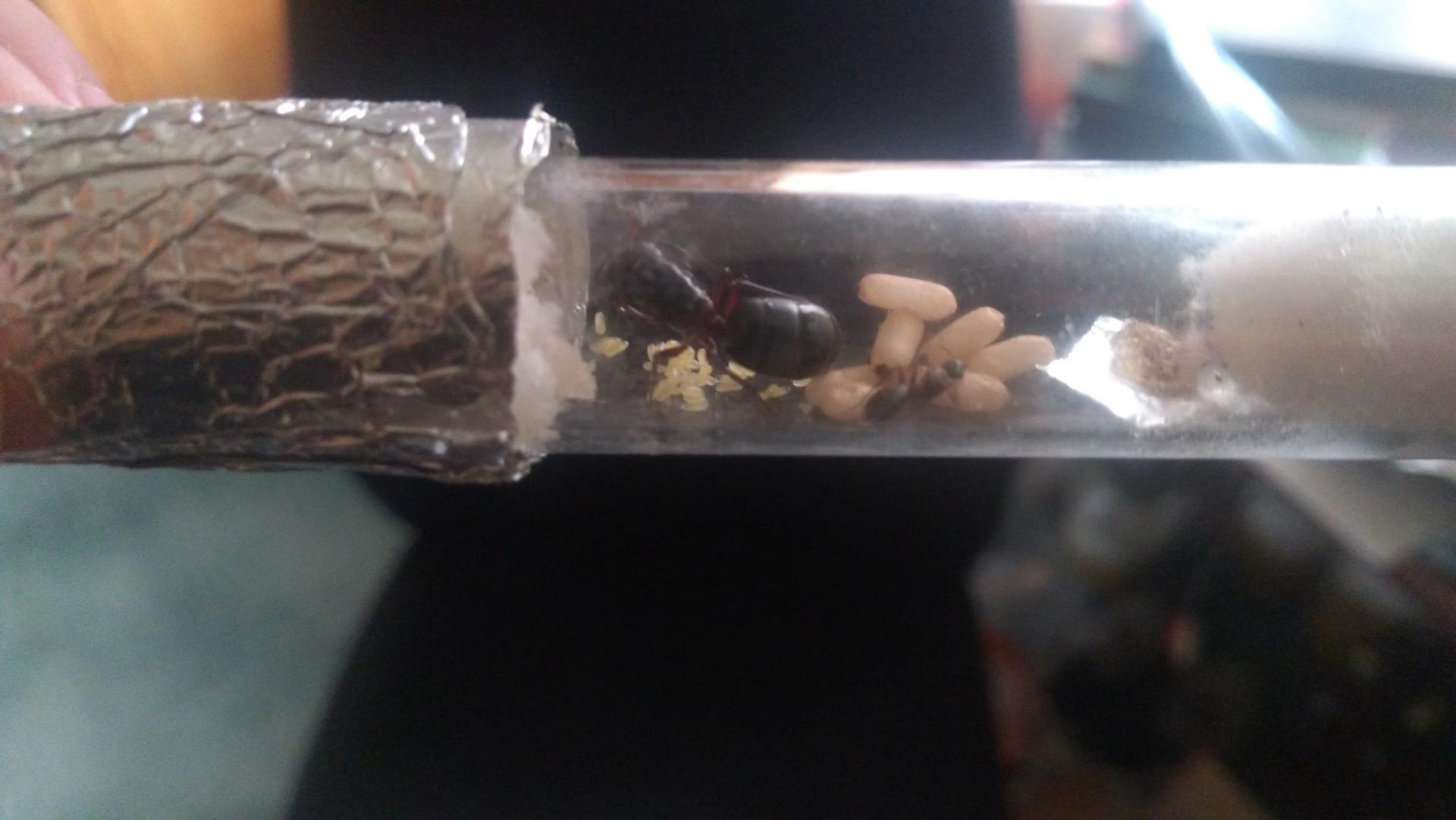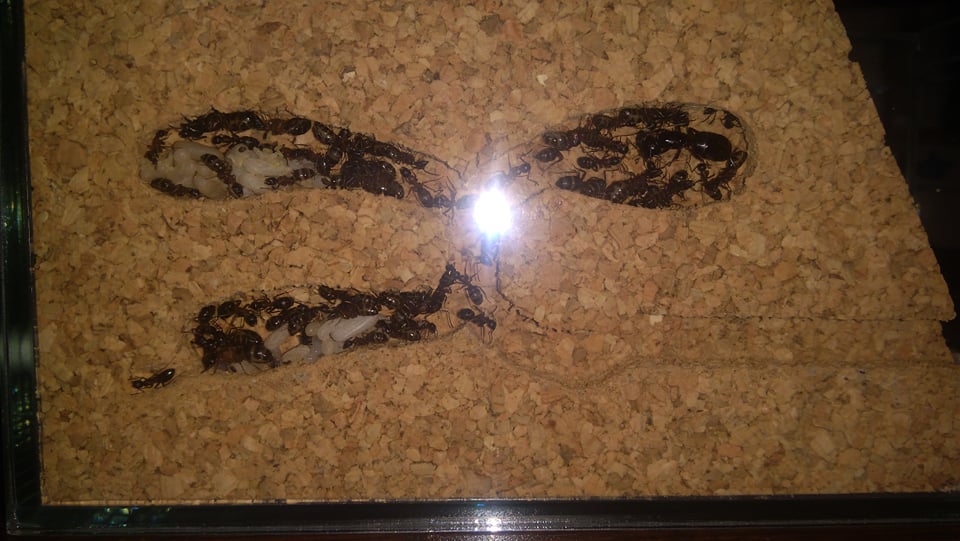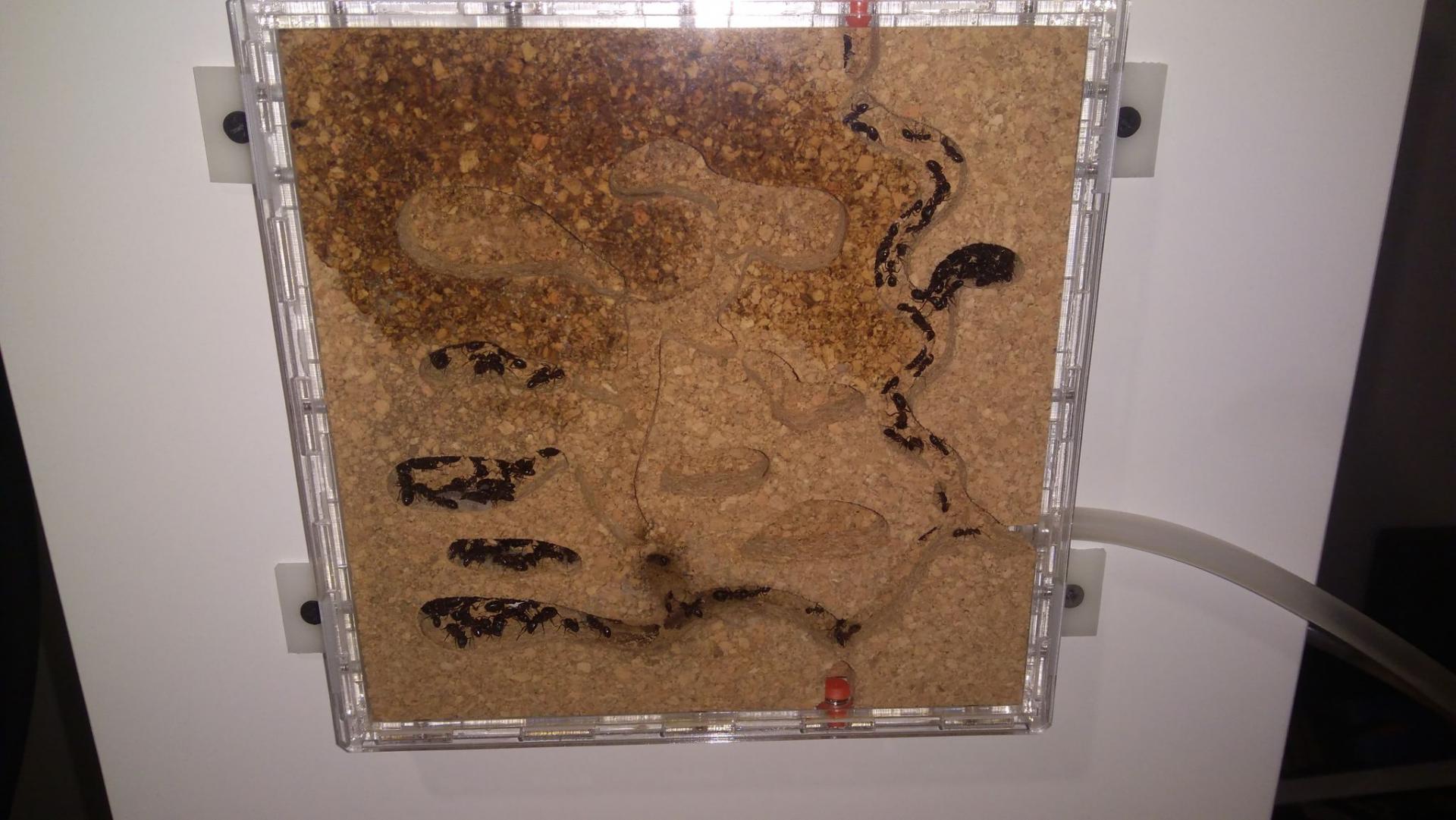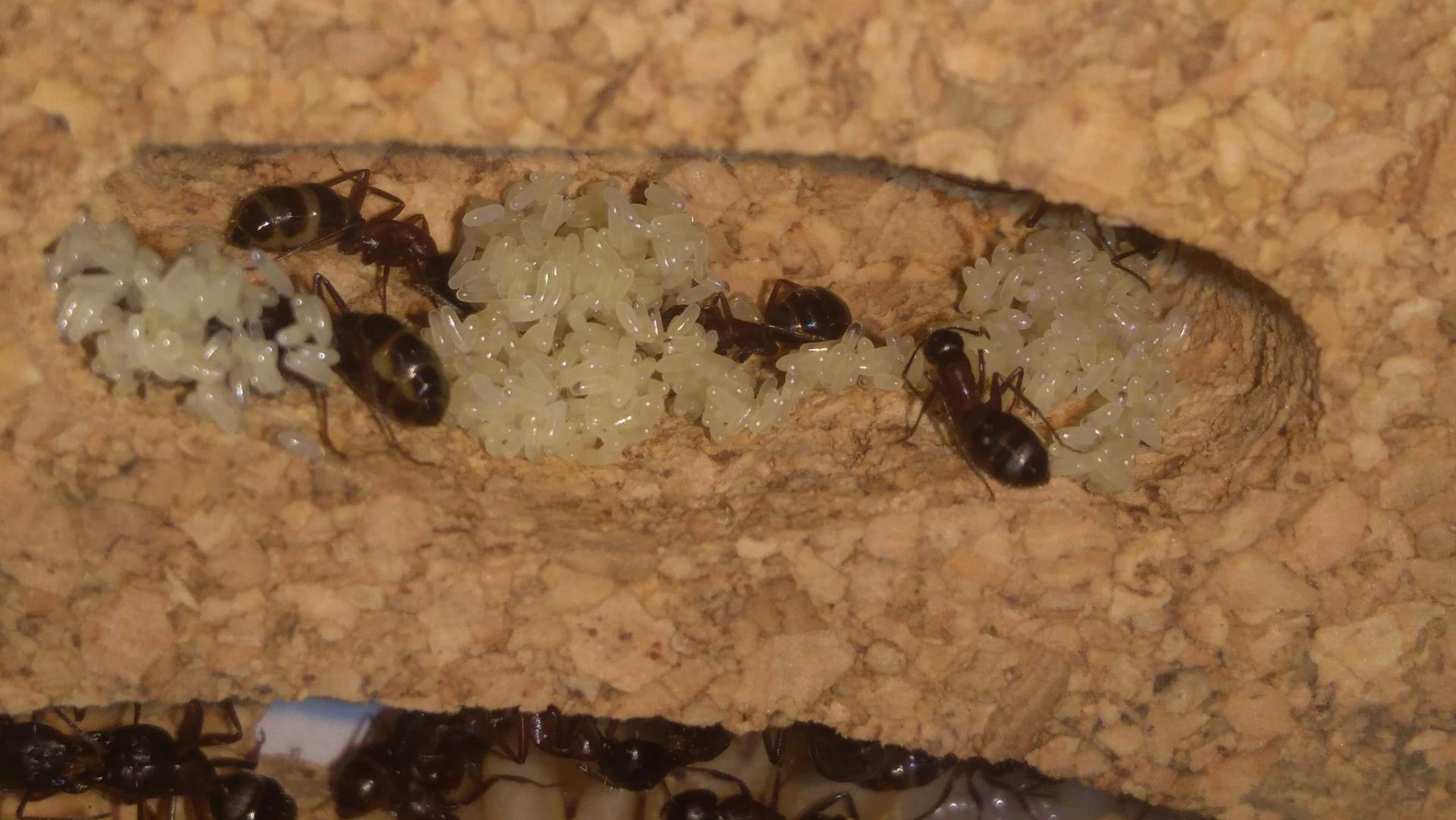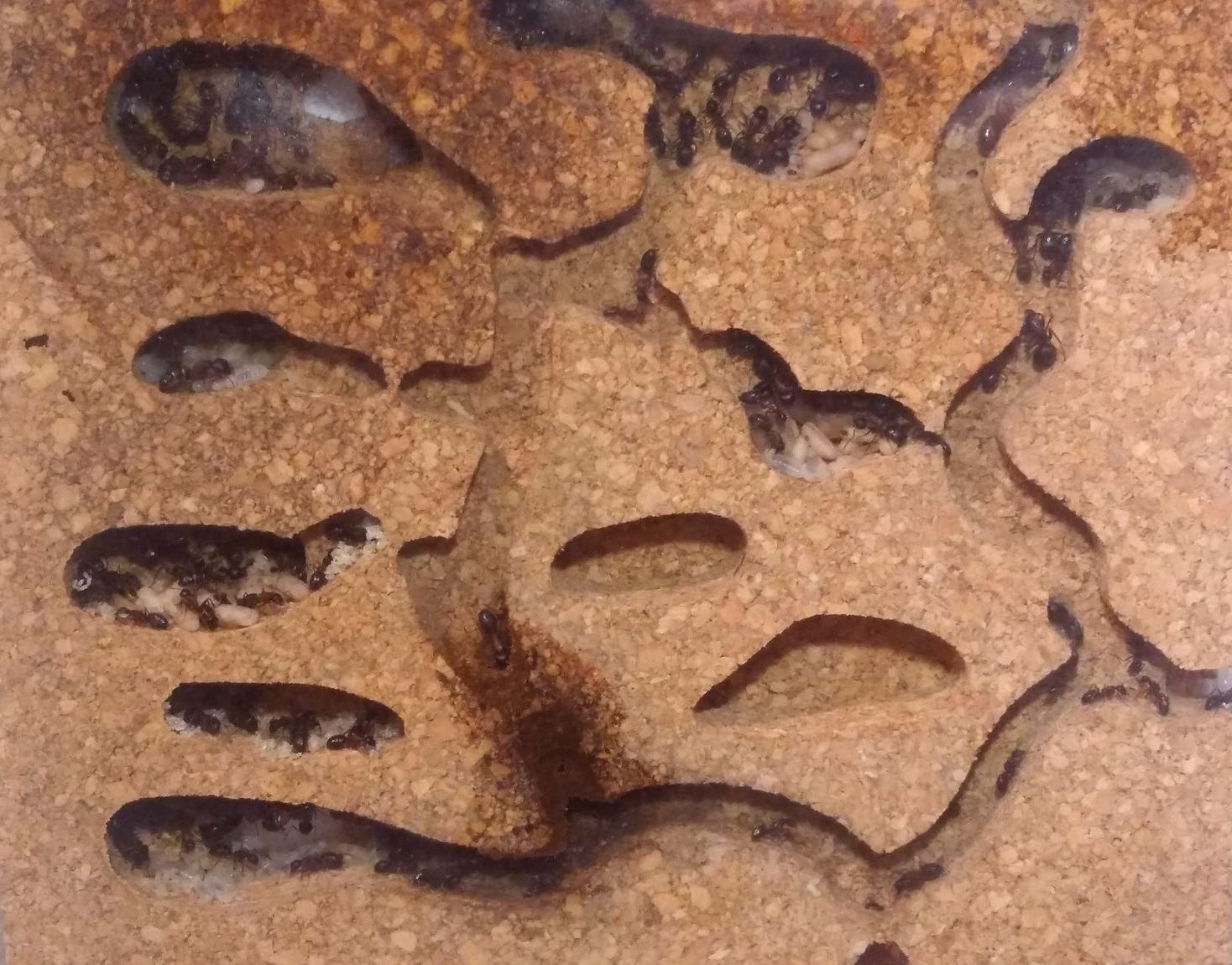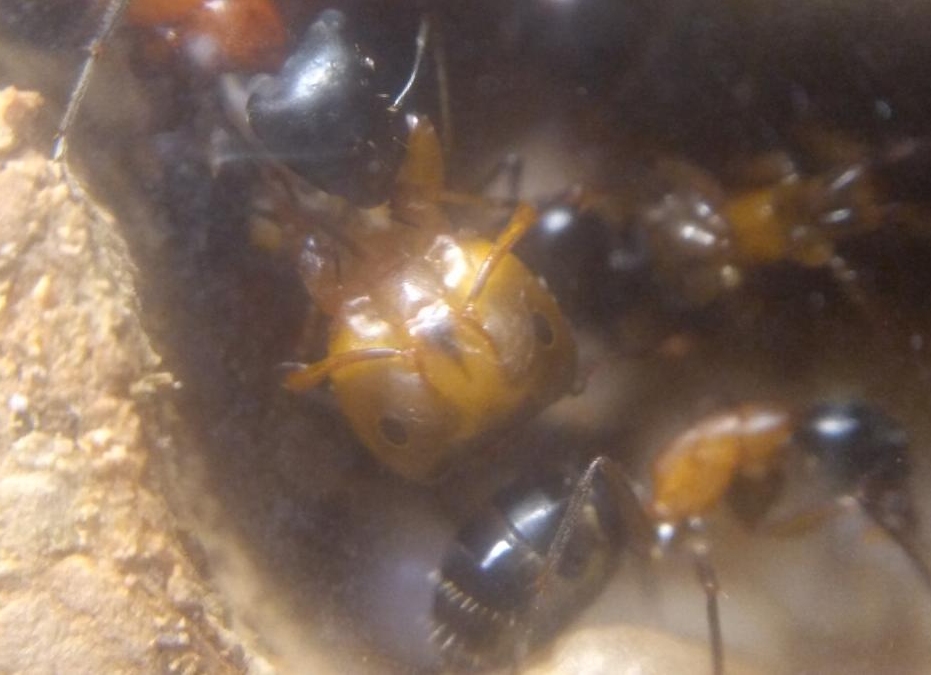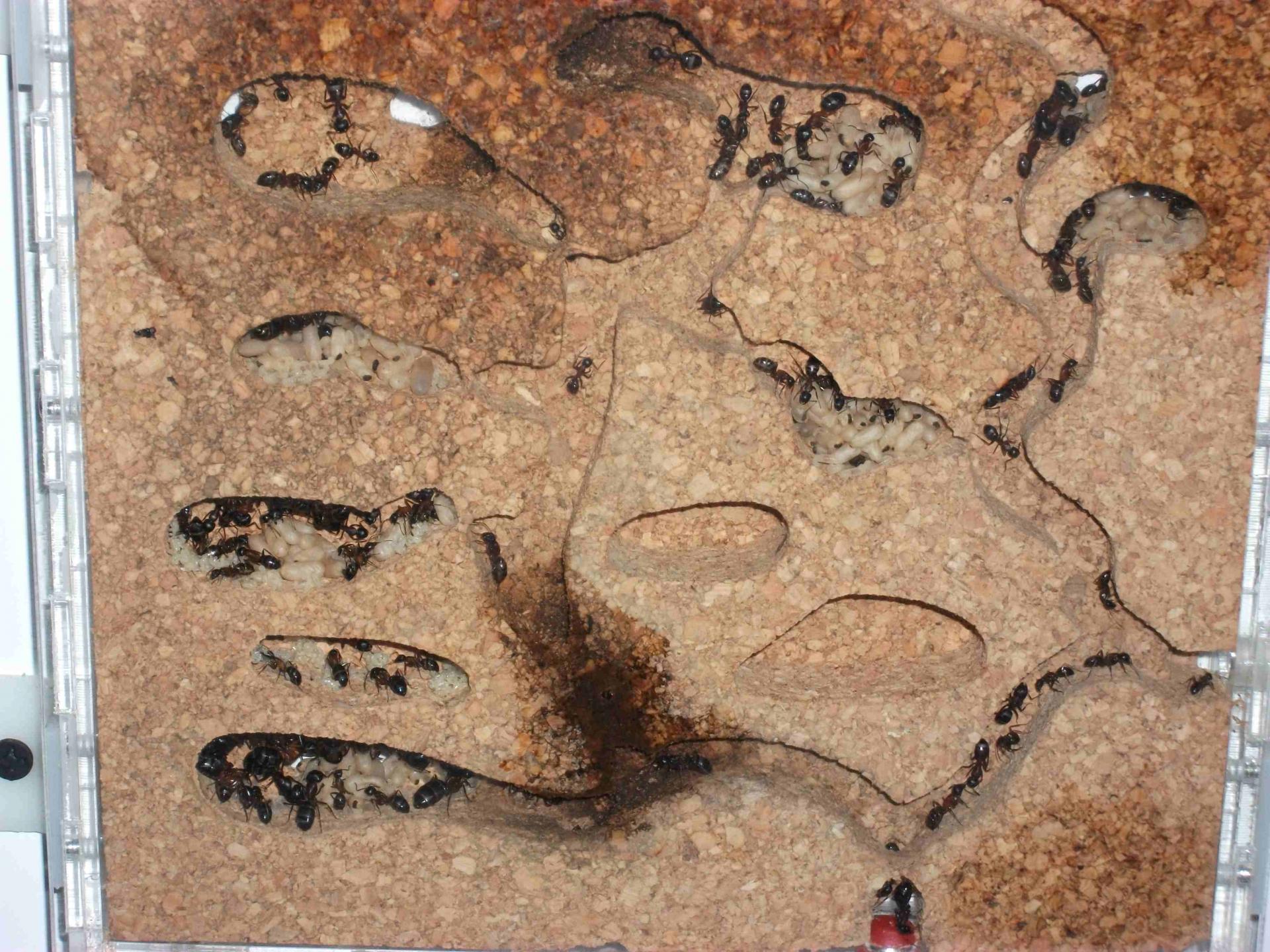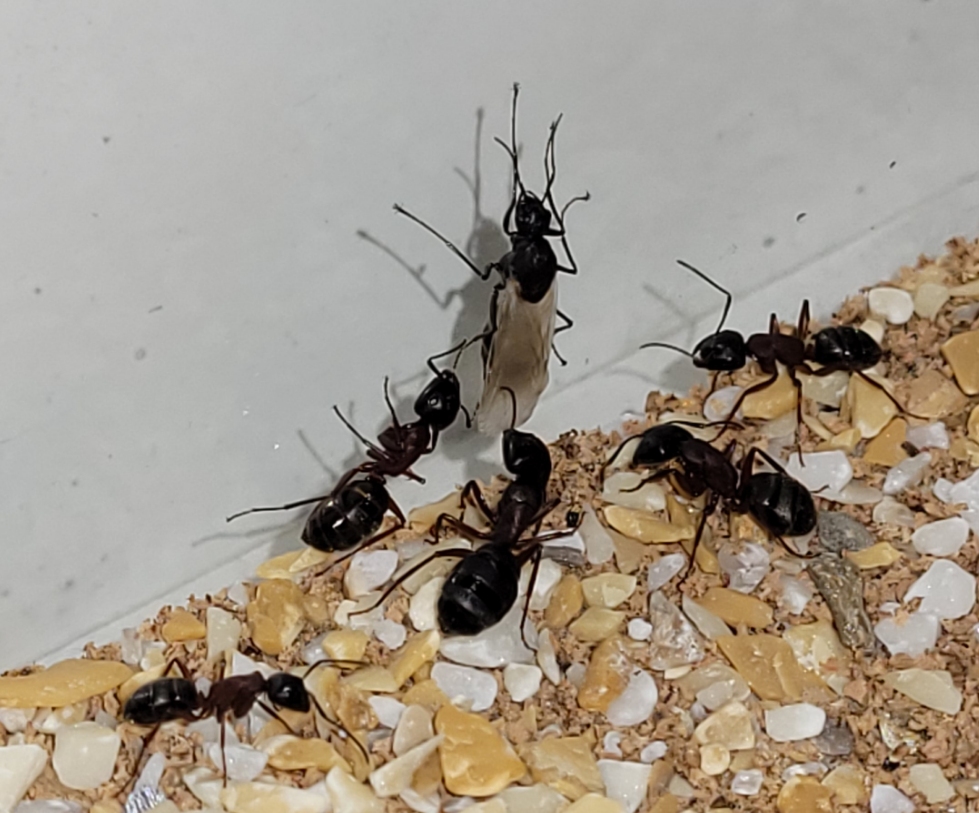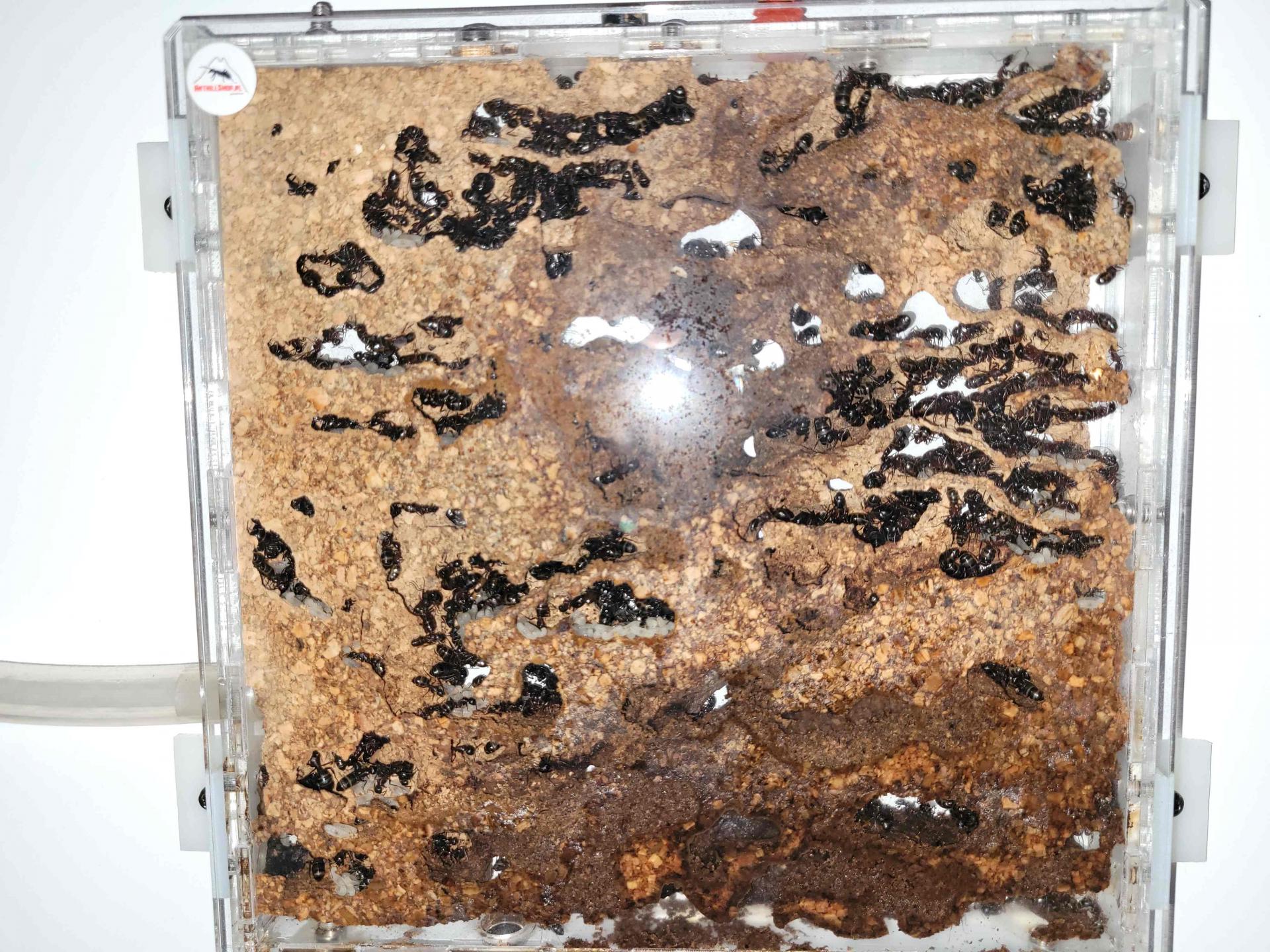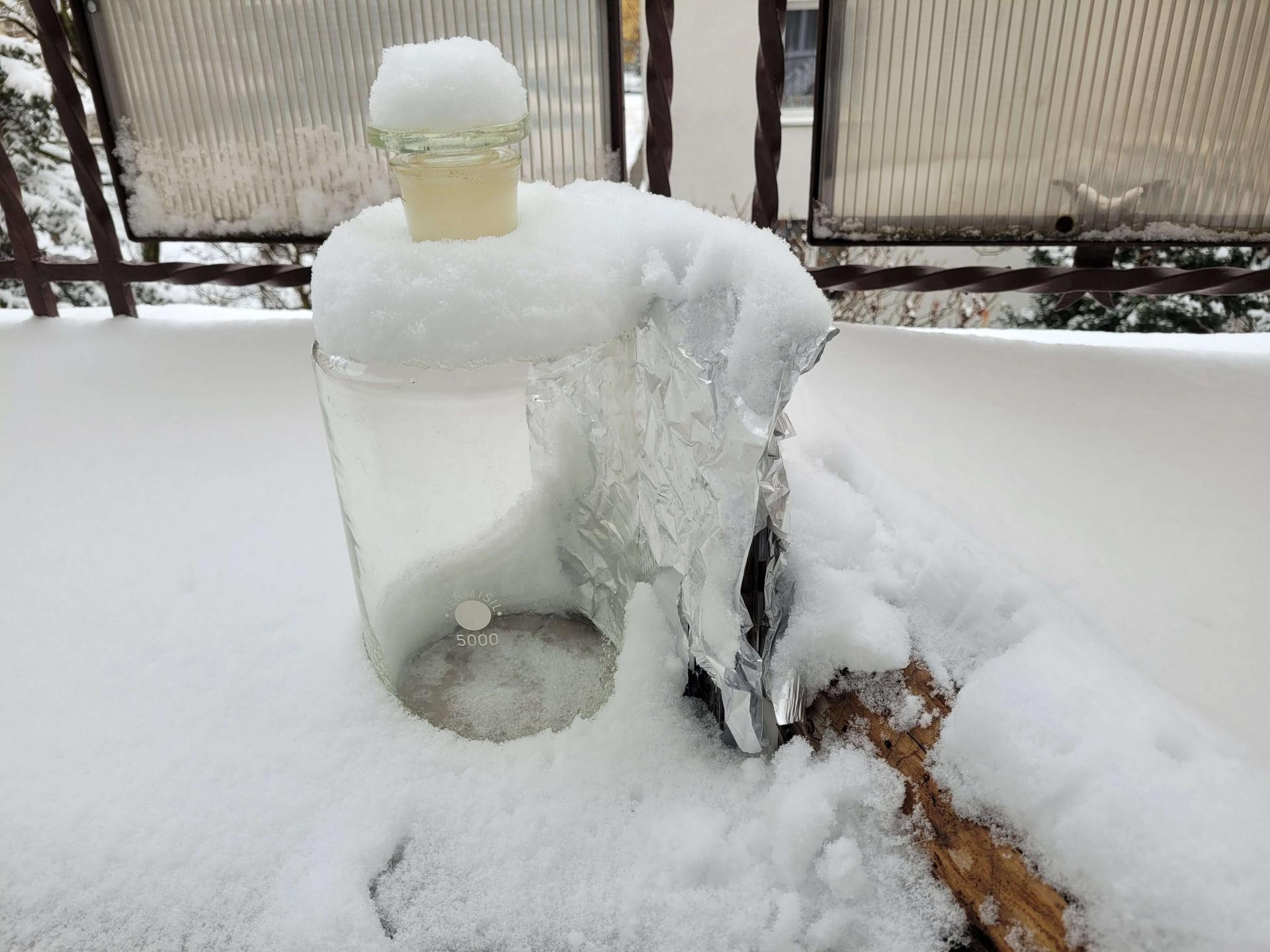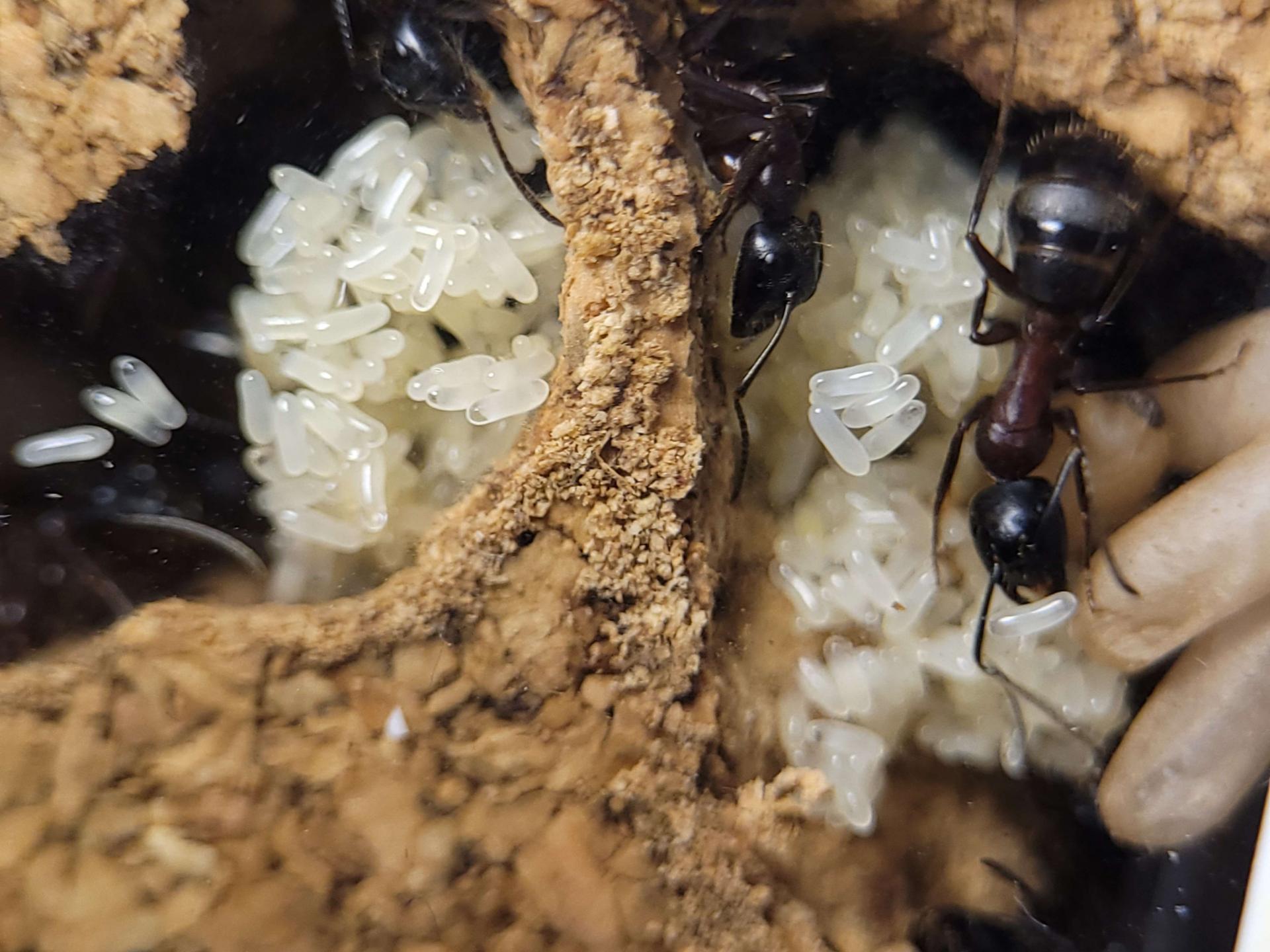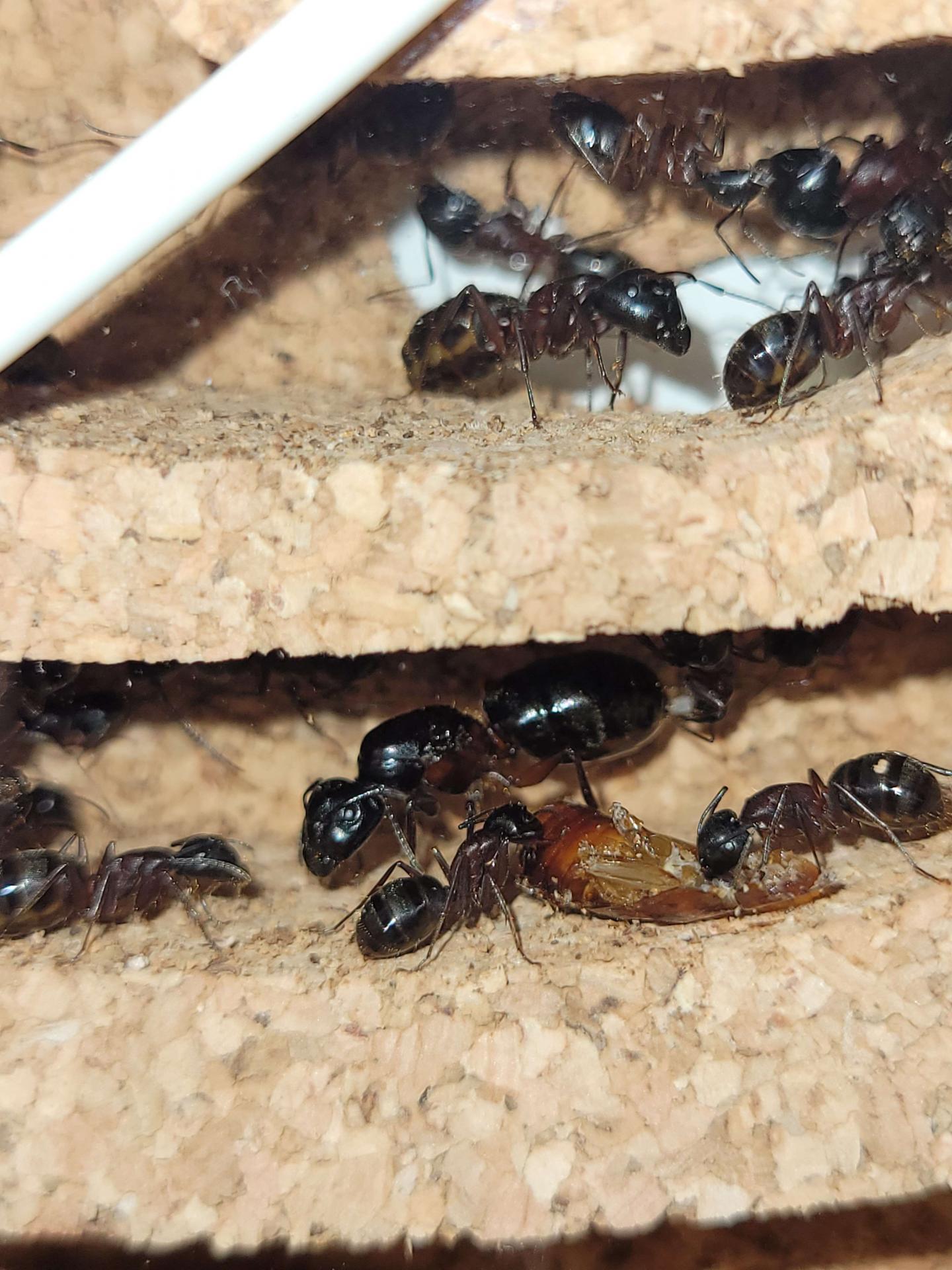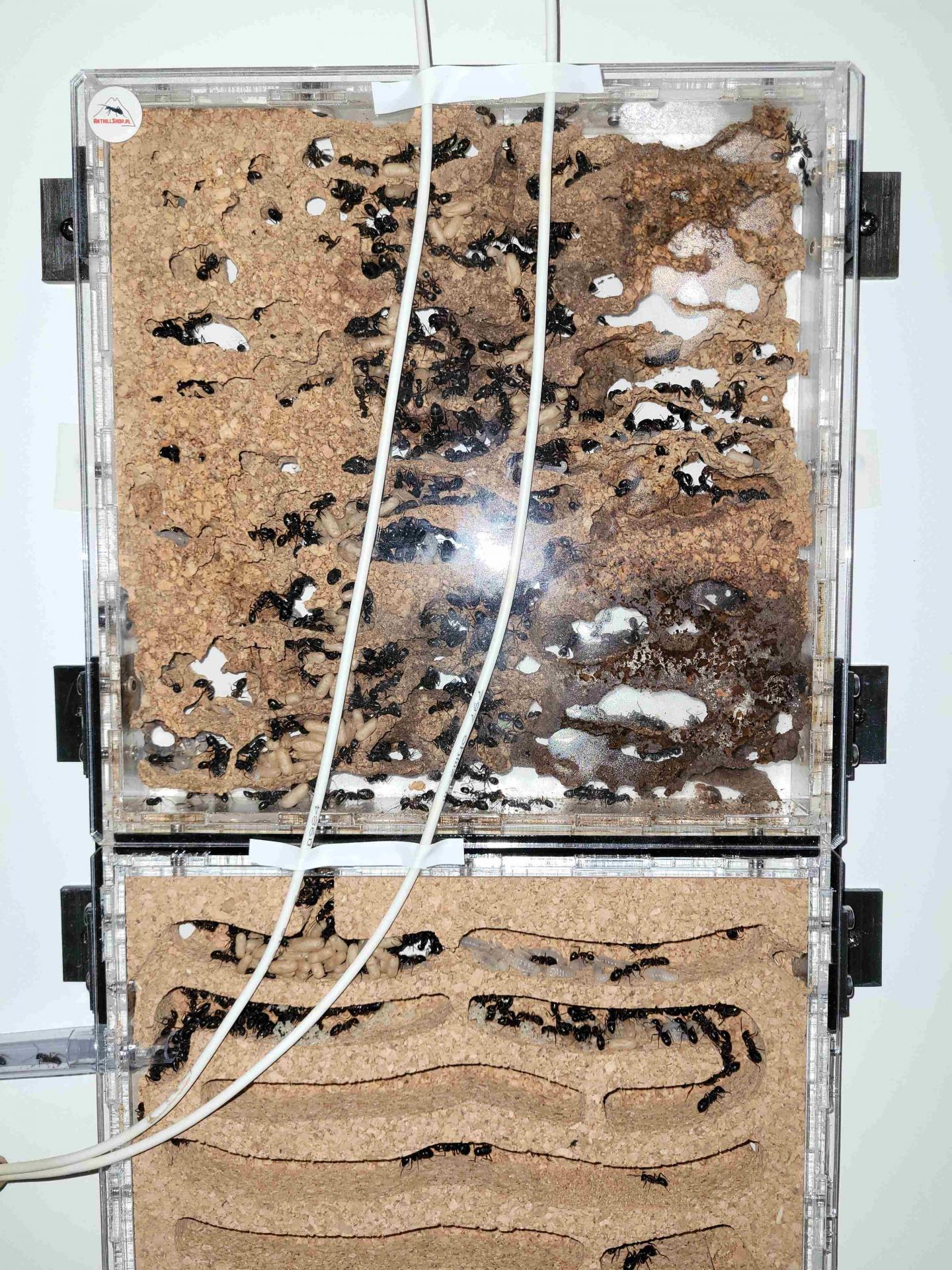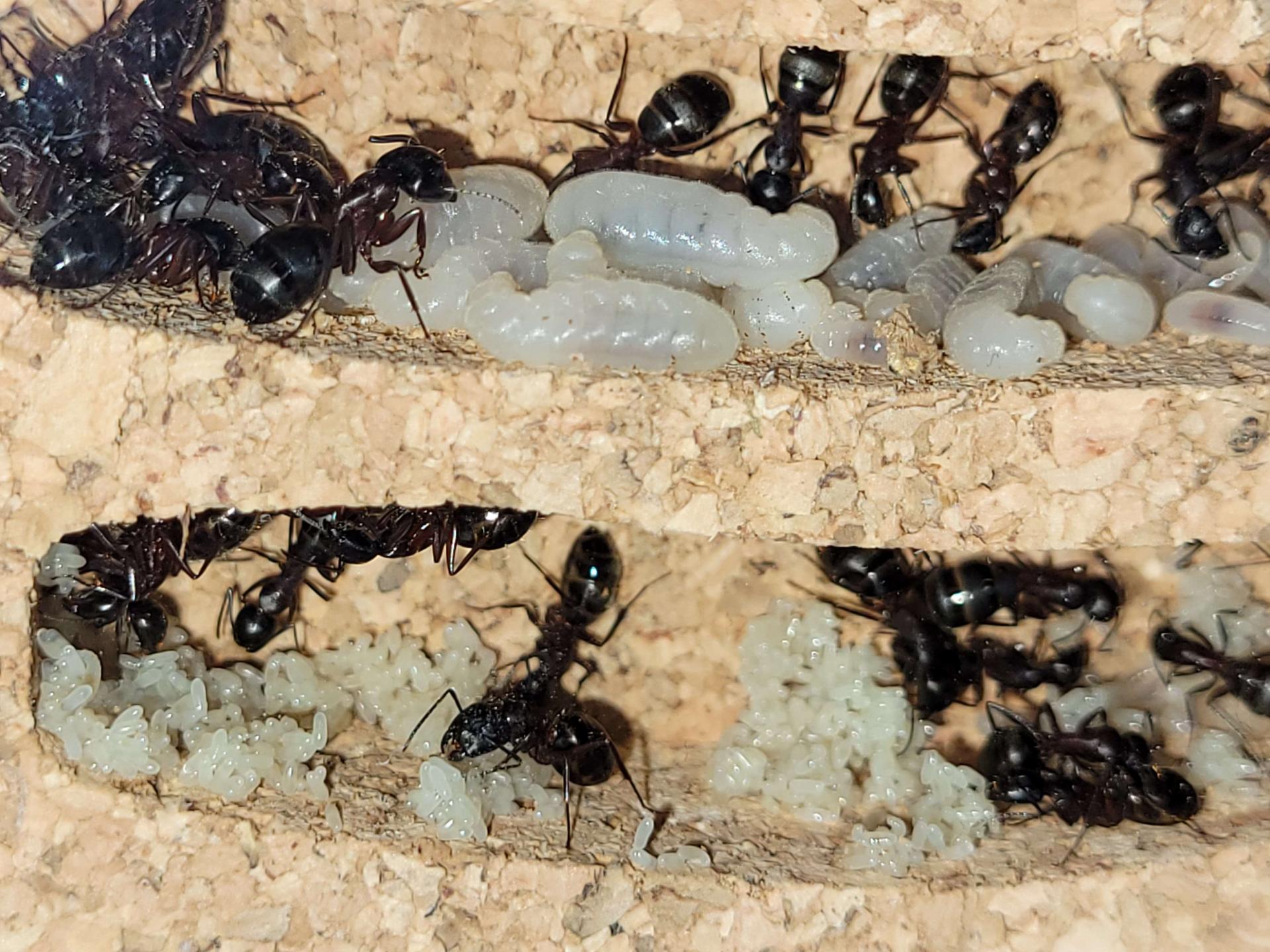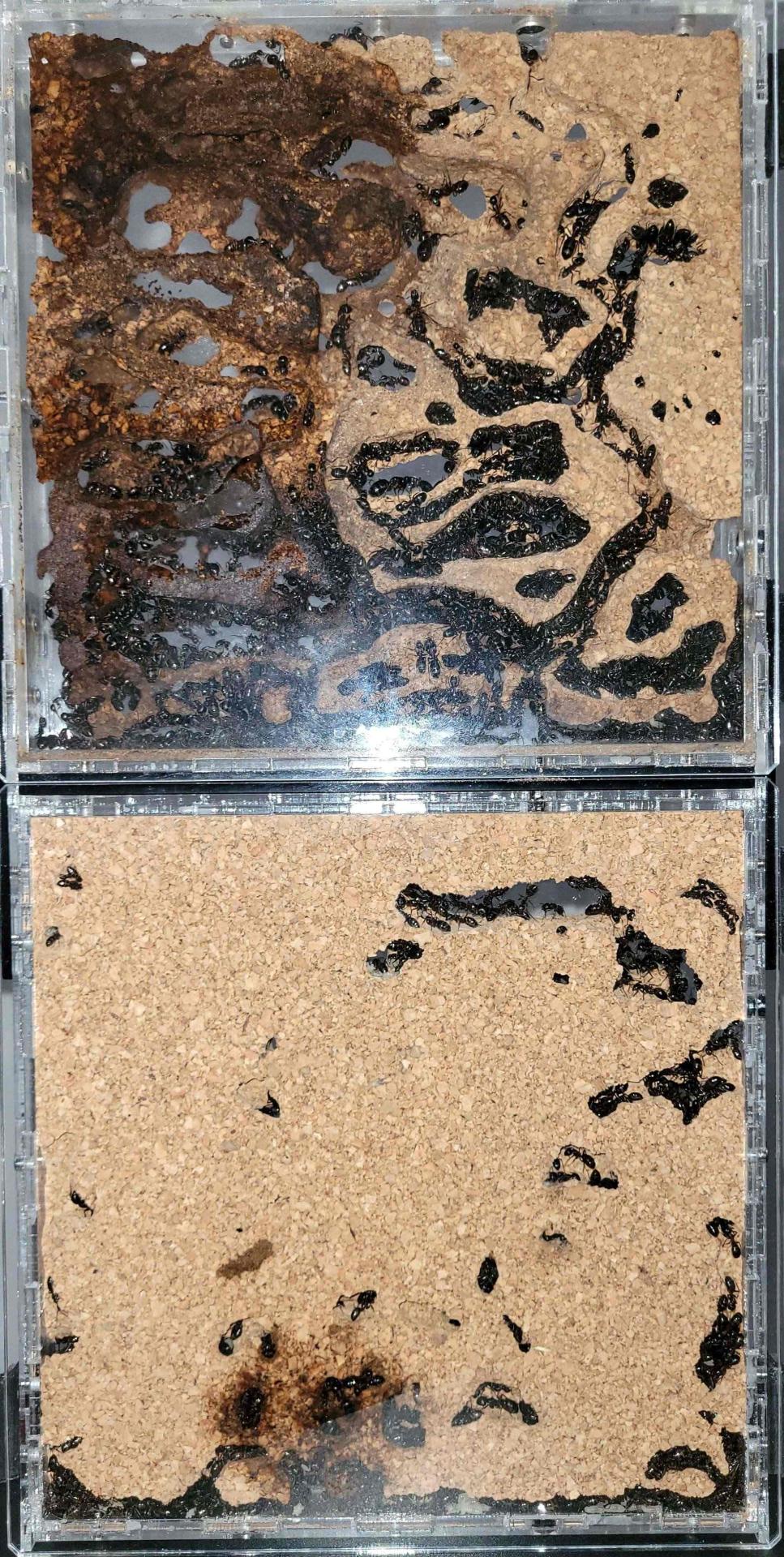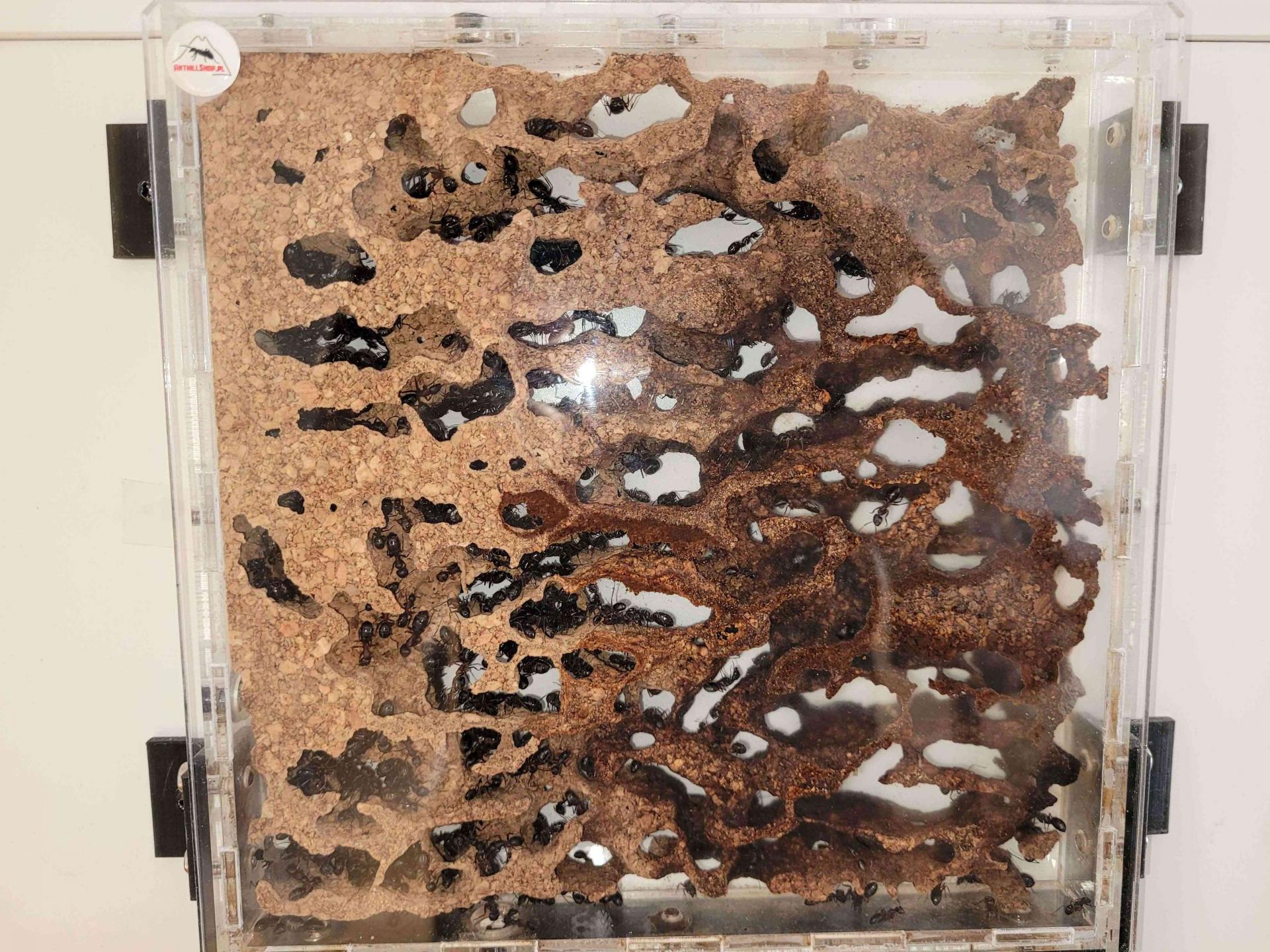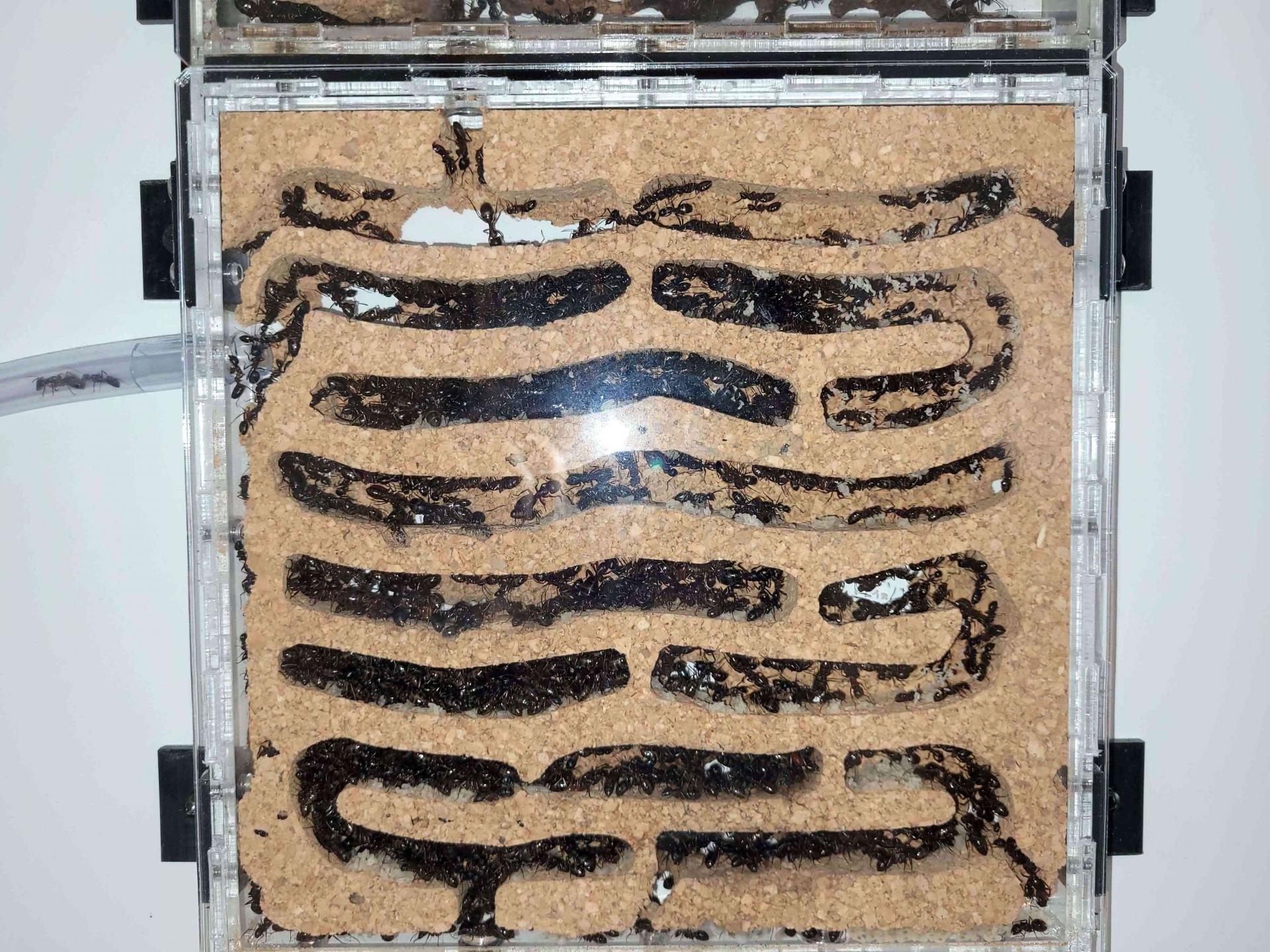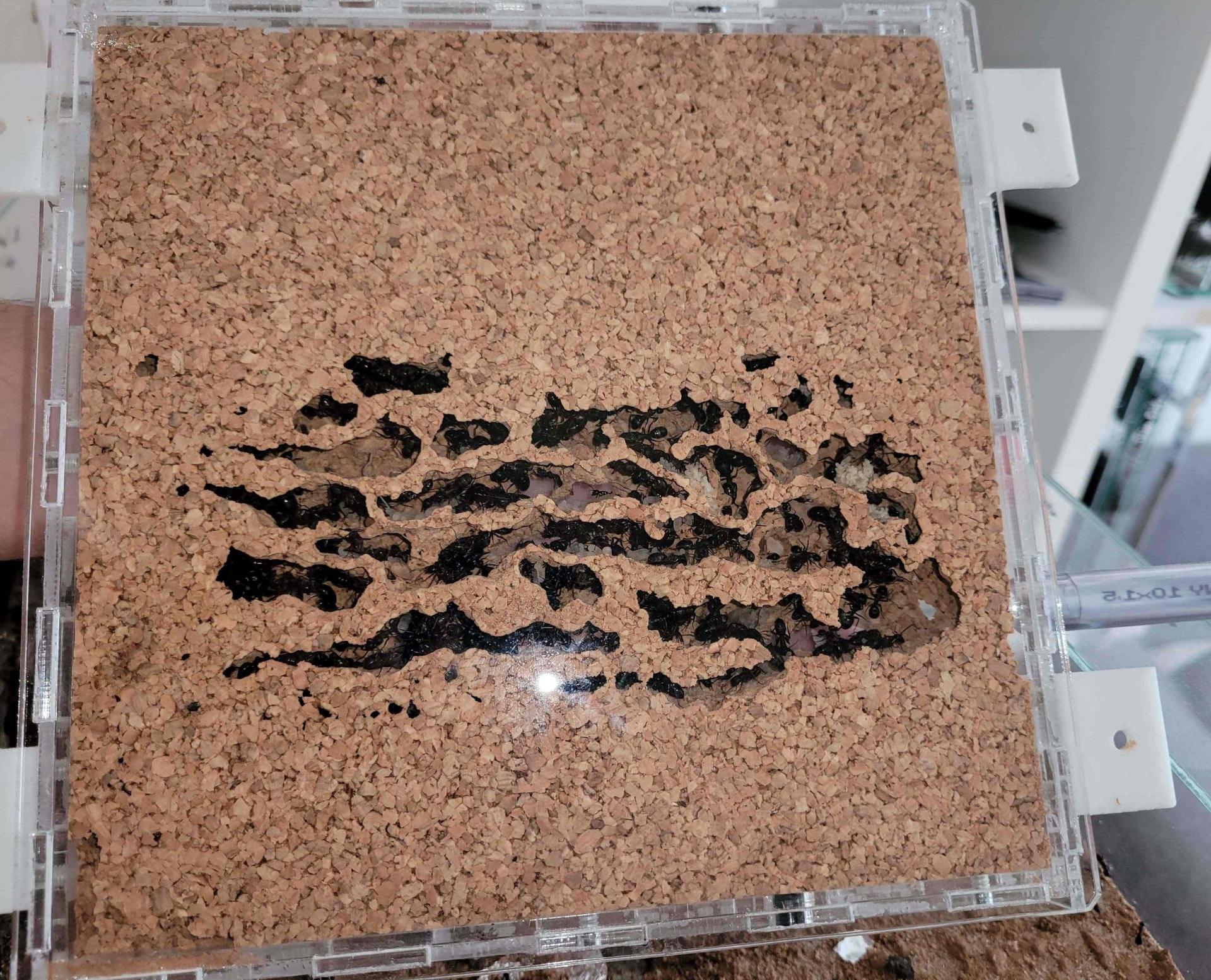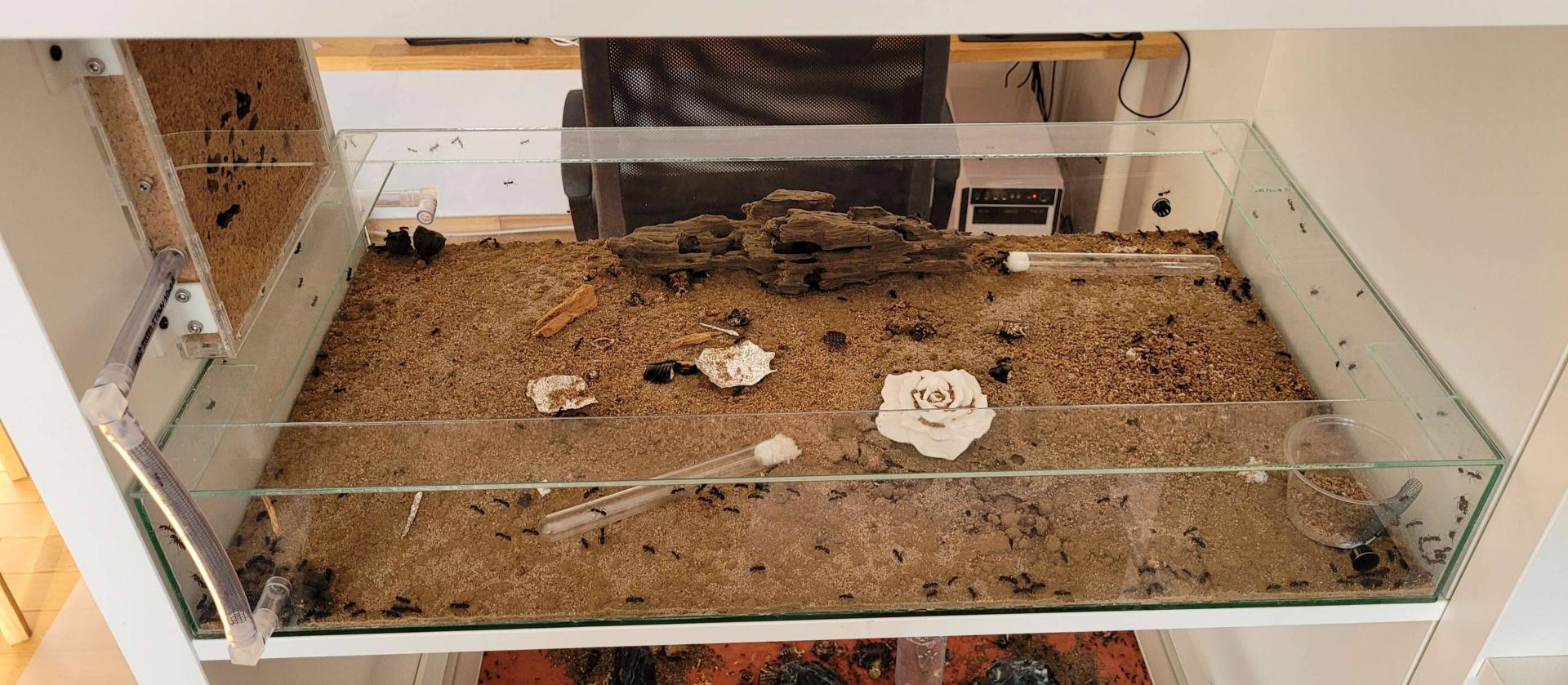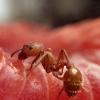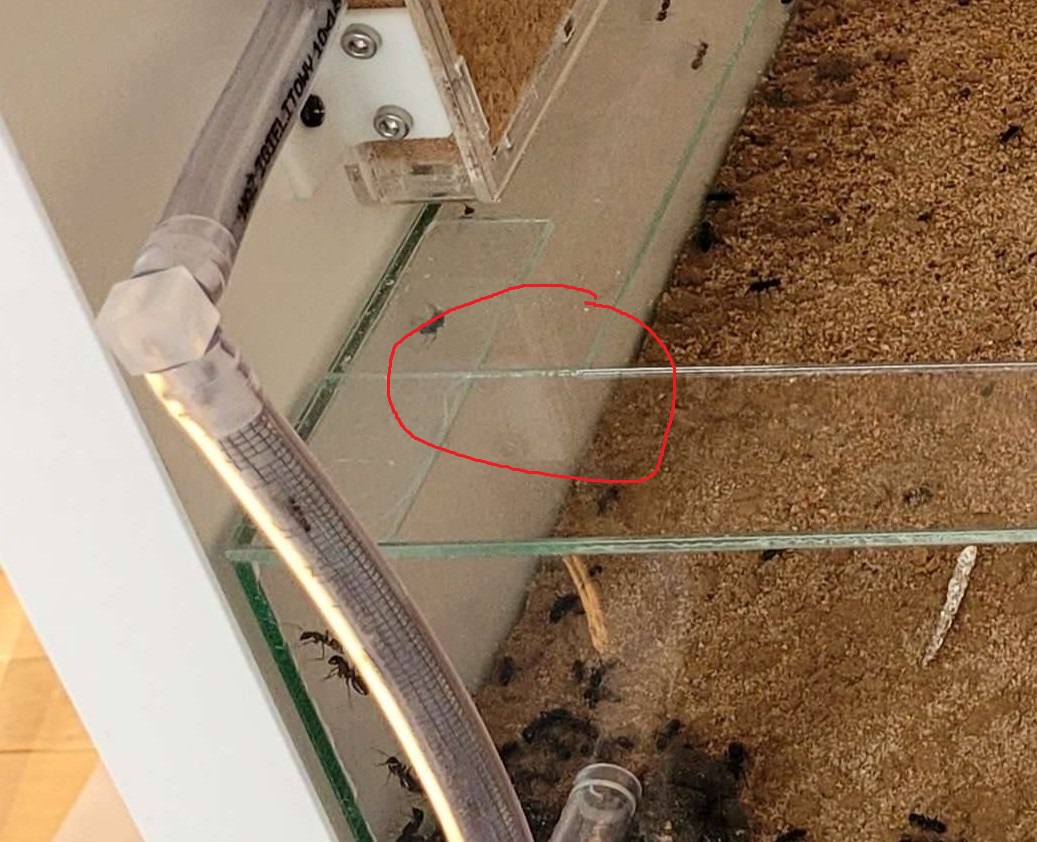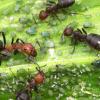This is yet another copy of my journal from a small Polish forum, since I think it might be useful to someone in the international community. I do not plan more than once-per-season update post the beginning.
The main takeaway should be - Camponotus herculeanus, contrary to myths of slow growth, can grow nicely if given what they need, which is mainly good heat in the summer and good cold in the winter. They need more than room temperature to grow properly in the season, I recommend 28°C for a test tube and hot spots of 35°C in nests, and need at least 3 months in the fridge at low setting to properly feel the cold - going below 0°C is perfectly normal for them, I had thrown this colony into snow outside one time and the growth in following season was exceptional.
I found the colony at stage of a queen, two workers and few overwintering larvae in dead wood on 2019.02.11. It's probably from 2018 flights then. Please do not repeat this step - the queens are widely available for catching during nuptial flights and for sale practically all year long, at least here in Europe. There is no need to destroy their homes (and homes of other insects overwintering in decaying wood).
All members of the colony were immobile due to cold - the air temperature was below -10°C at the day of catching, and was dropping below -15°C at night.
It took the queen 3 days in 10-15°C to start moving at all!
But once they realised it's warm, they quickly started growing. This is just a month after they had been in deep sleep mode, all overwintering larvae had grown and pupated, and the new batch of eggs promised a lot of further growth:
By the end of first season at my home (and, presumably, their second season) there were 80-100 workers. Some were living in the outworld at the time of taking this photo, since a water source spilled and the sand was nice to dig and sit under ![]()
2019.06.08
After this season a time of my failed experiments came. I tried to rehouse them into incorrect types of nests - wood and ytong, both with just glass attached from just front side. These types of nests fail to keep moisture inside, since most of their surface area allows the water to evaporate, and the wooden nest wasn't even possible to water manually, ants were supposed to do all the work. So they kept the brood in tubing connecting the nest to the outworld. I won't include pictures of that to not encourage any keeper to follow my mistakes ![]()
That's why there will be a large gap in the journal.
I also attempted overwintering for just 1,5 months. This also was a failure - apparently the queen was ready to start a season, but workers were not. The end result was that there were lots of eggs, but once they hatched they disappeared soon, like the workers did not feed them at all. Workers were also not very interested in foraging, they were just hanging around like waiting for winter... Don't follow this mistake too. Minimum 3 months. No less.
Anyway, after a series of mistakes I settled on cork nest encased in plastic. Cork is the best nesting material for ants liking nesting in dead wood or in bark. The nest comes from a Polish shop (anthillshop.pl), the wall mounts are 3D printed, of my idea and design. I moved them into it in late 2020, at the end of their activity for a season. The nest dimensions (internal) are 20x20x2 cm.
The nest looked so large and empty, yet the ants were digging into the cork and quickly unlocking new chambers:
2021.02.27
2021.03.24
Nest practically fully unlocked in just two months:
2021.04.23
First proper majors started arriving. Notice the slight phragmosis?
2021.04.25
Full season look
2021.05.01
Soon after time for winter came.
In the middle of the summer?!
Yes. The length of the season was just like they had in nature, but beginning of the season was much earlier, so end of it was also much later. I personally don't think it's necessary to wait until outside winter catches up with my pet ants, especially since my home is heated, so they wouldn't know the outside cold anyway. The only cue they could be getting is day length, but - after keeping two native Camponotus colonies like that for five years - I am confident there are no detrimental effects of overwintering ants when they hit diapause regardless of outside season.
Next season started at 2021.10.02.
The toilet areas are starting to look gross.
2021.12.02
Some accidental male has appeared. It was a second time they did it, it was dispatched soon after.
Next season has started in June 2022.
In August I have decided to flip the nest backside to the front, since the ants had dug through the cork so much that I found it to be more interesting than the premilled chambers from the front.
2022.09.27
Sometime during winter they were actually overwintering, so I did a silly thing and had thrown the nest into the snow outside. The temperature was somewhere around -5°C.
2022.12.12
Following season was fruitful. Not because I fed them fruits, but because they grew so nicely.
First egg was spotted on 2023.02.23
Soon after there were piles of them.
2023.03.10
I managed to take two timelapses of eggs hatching.
I haven't mentioned it before, but seeing the queen started becoming a rare sight ever since I let them into this nest. It changed once I attached a new nest, I've noticed her a record 4 times in that season. Here she is clearly visible and even laying an egg. It's interesting to note she's not really physogastric - the gigantic gasters of Camponotus queens can handle laying thousands of eggs in a season without needing to get swollen, since enlarged ovaries still fit inside!
It's interesting that she was already present there while the nest was barely explored.
2023.03.30
Some chonky larvae and eggs:
Now notice how much the colony has grown in this season - these are pictures of nests (front and back) at the end of the season following snow time. The bottom nest was attached just this season!
2023.07.15
Next season has started on 2023.11.09. I have attached a third nest to the colony - same type, but this time without any premilled chambers, just a slab of cork. This might result in worse visibility, but I love their craft and I want to see the naturally shaped chambers they make.
This photo session was done on the 5th anniversary of me getting this colony (well, almost).
2024.02.14
Workers can sense which side is connected to a wall even when the nest is covered with aluminum foil, so most of the chambers visible from outside are on the backside, so I had to unscrew this one.
I don't usually post outworlds of my ants, but I like this expansion. It takes full two Kallax modules - 68,5 x 38,5 cm, made to fit.
So far this colony has not produced any proper alates, just two males which were culled quickly, so I consider them to be accidental. I dread the moment I will need to deal with them, but at the same time - it would be nice if they would stop growing larger and larger, since this colony is quite space consuming.




